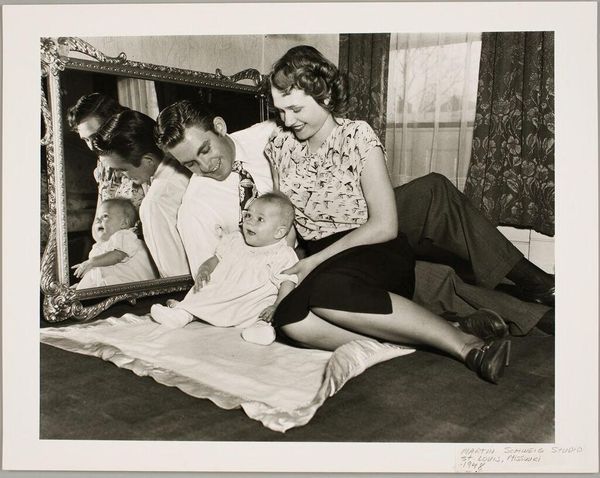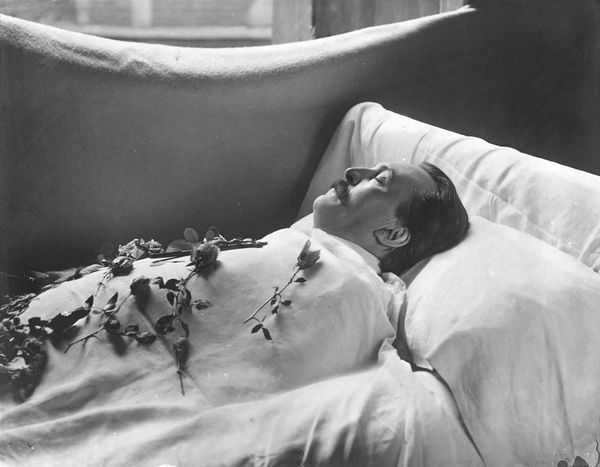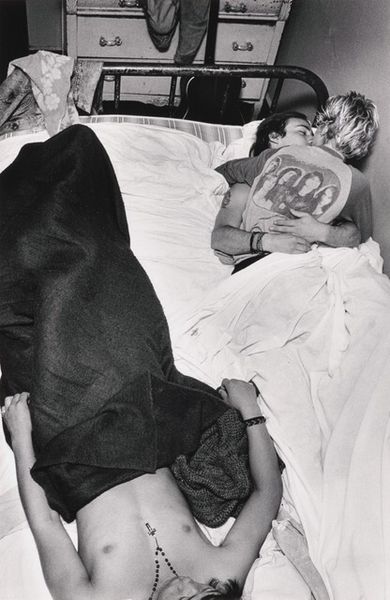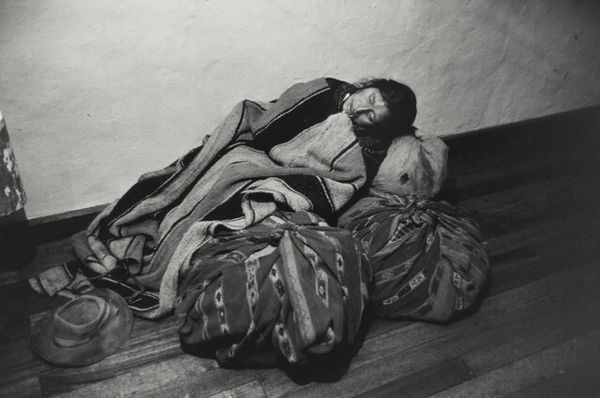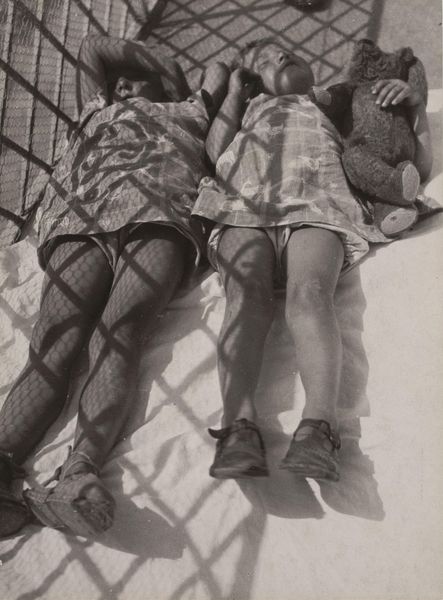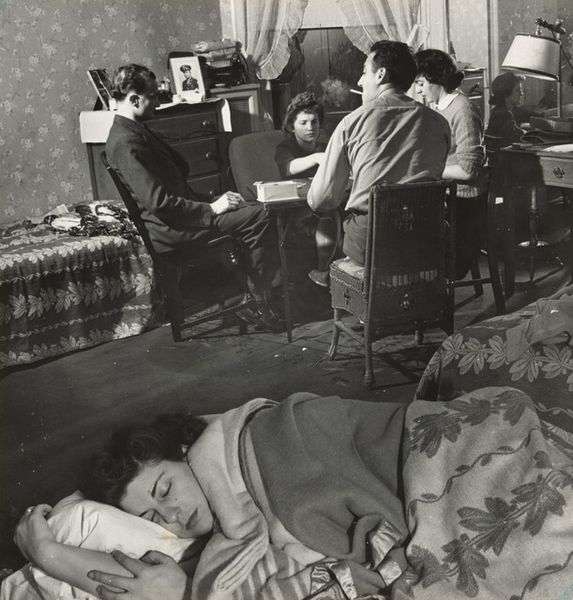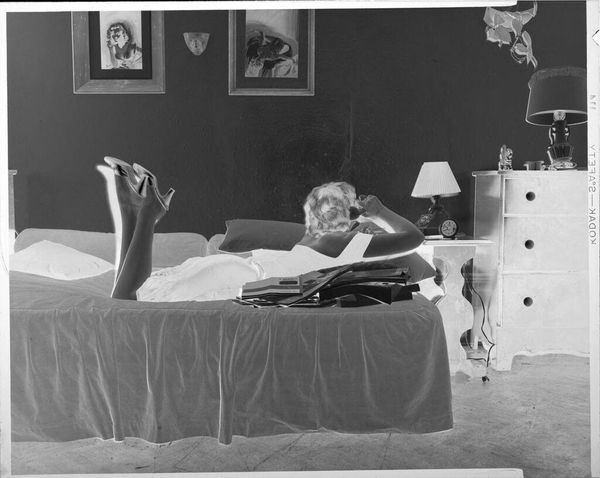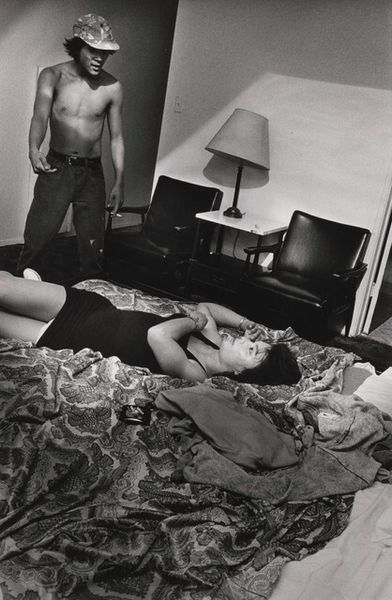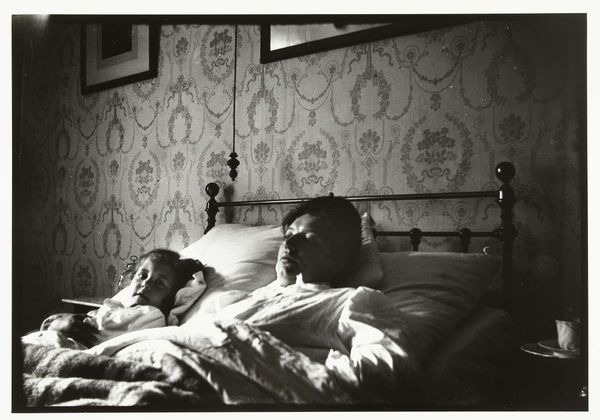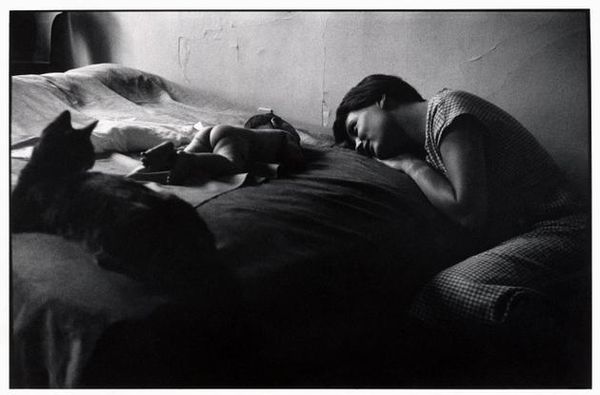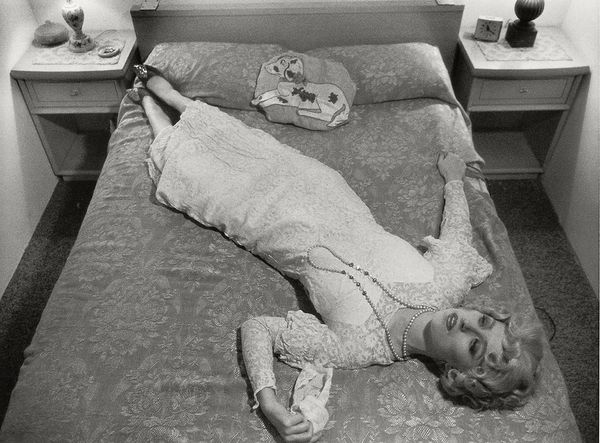
photography, gelatin-silver-print
#
portrait
#
photography
#
intimism
#
black and white
#
gelatin-silver-print
#
monochrome
Copyright: Brassai,Fair Use
Curator: Ah, there's something so deliciously louche about this one. Editor: We are looking at "Kiki et ses amies (Thérèze Treize et Lily)," a 1932 photograph by Brassai. The silver gelatin print presents a slumber party scene, complete with drowsy-eyed women and two dogs resting upon a patterned rug. My first thought is that this is staged. The women seem to be “performing” exhaustion in front of a heavily patterned wallpaper and furniture. Curator: You know, Brassai, he lived a double life, didn't he? Society portraitist by day, chronicler of the demi-monde by night. So yes, there's a performative aspect, I see what you mean. But isn't it the genuine article peeking through, too? This intimacy—it's languid and lovely, no? They are so at ease. The pattern upon pattern makes me feel delightfully drunk with them. Editor: Perhaps, and I suppose one must concede the artificiality might well be the point. As a cultural record, it provides a lens through which we might contemplate Parisian female networks, particularly their visibility, creative output, and the way such intimacy might resist or rework ideas about respectability at the time. How subversive! Even though, they were simply enjoying an afternoon respite! Curator: Precisely! See, there's a hint of rebellion, or, dare I say, delicious defiance. But let’s talk about light. I can see Brassai really experimented, embracing light to reveal layers, but I'm always intrigued by the darkness. He shows so well how to expose those fleeting, genuine feelings. That dog's side eye...I can't handle the cuteness! Editor: Agreed, Brassai captured what it meant to find the extraordinary within the ordinary. However, I keep circling back to the title and its almost clinical inventory of those present, "Kiki and her friends." Almost, anthropological in its observation. Do you think Brassai was in awe of his female muses? Curator: I think that's absolutely right. Brassai was a sensitive soul—completely dazzled by the independent women that marked the epoch! Perhaps he simply appreciated their presence, and wanted to show it by capturing and sharing this specific and genuine feeling for those on the photograph, as well as the viewers of it. Editor: Right. Capturing something is always subjective and contextualized, like history, perhaps. The quietness within the chaos. It asks us, ‘Who gets to rest, who is always watched?'
Comments
No comments
Be the first to comment and join the conversation on the ultimate creative platform.
